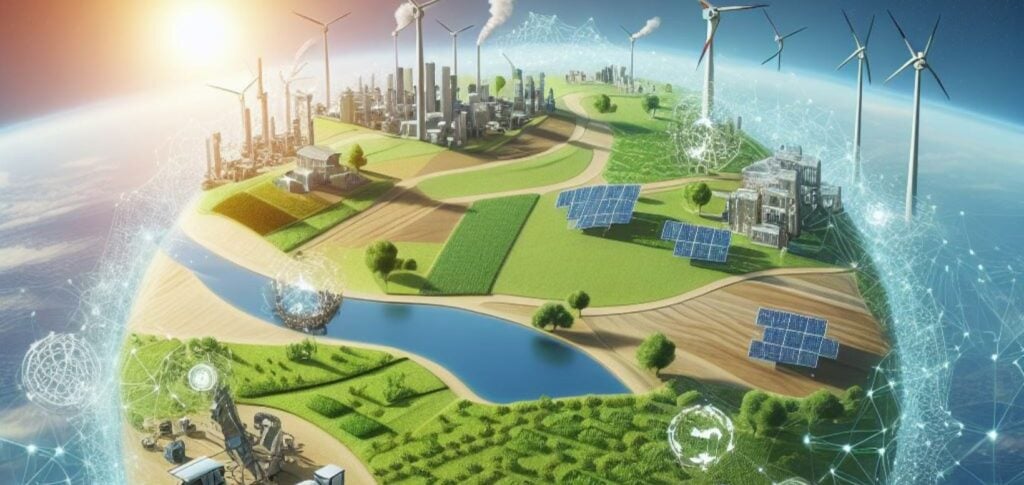🌊 IOC-UNESCO launches “Blue Friday” in defense of the oceans
The call "Black Friday“, which takes place this Friday (25), launches the Christmas shopping period with huge discounts and is one of the expoepeaks of consumerism, having started in the United States, then spreading throughout the world.
ADVERTISING
With this in mind, for the first time, the UNESCO Intergovernmental Oceanographic Commission (IOC-UNESCO) launches the “Blue Friday“, this Friday and Saturday, with the aim of “transforming a purely consumerist event into a moment of reflection dedicated to safeguarding and restoring the Mediterranean Sea, through ocean literacy initiatives”.
The initiative, launched in Venice, Italy, aims to raise awareness about the environmental impact of massive purchases and preserve the oceans. A "Blue Friday” is organized within the framework of the United Nations Decade of Ocean Science for Sustainable Development (2021-2030), created to promote the role of ocean science in fostering more sustainable development.
🏜️ Atacama Desert turns into landfill
Mountains of used clothes, cars and tires from around the world pollute the vast Atacama Desert, in northern Chile, an ecosystem with a fragile balance that has become the planet's dumping ground. Among landscapes full of beauty, clusters of debris appear in various parts of the desert, a territory measuring more than 100 thousand square kilometers.
ADVERTISING

In neighboring Iquique, thousands of car and tire carcasses also accumulate. There are so many that they are now used to build house walls.
The fragility of the desert and those who live in its surroundings led lawyer Paulín Silva, 34, to file a lawsuit against the State of Chile for environmental damage. In her lawsuit, she attached satellite images showing the exponential growth of clothing warehouses.
More than half of the used clothes that enter Chile are discarded and end up in the desert. To hide them, they are burned and buried, creating an additional environmental problem of toxic smoke.
ADVERTISING
For the lawyer, there is a responsibility on the part of the Chilean State in allowing these mountains of garbage to exist: “There is a duty of vigilance”, she states.
Judge Mauricio Oviedo, head of the First Environmental Court in Chile, where the case is being processed, defends a comprehensive solution for the disposal of clothes. “It seems to me that the State of Chile as a whole, with other departments (…), should look at this problem in a systemic way,” he told AFP.
🌱 Nature and climate, two crises that cannot be dissociated
Environmental experts and activists expected the UN Climate Conference (COP27) ended with a strong mention of biodiversity in his final statement. But they left disappointed.
ADVERTISING
For some, COP27 delegations missed an important opportunity to recognize the connection between the climate crisis and the biodiversity crisis, which have long been treated separately. Failure to resolve such crises will further decimate Earth's life support systems and also miss the goal of limiting the global warming at +1,5ºC, they warn.
“We are lost if we don’t solve climate and we are lost if we don’t solve biodiversity,” Basile van Havre, co-chair of the UN biodiversity negotiations, told AFP.
At the COP15 biodiversity meetings next month, dozens of countries will have to find a new protection framework for fauna and flora threatened with destruction.
ADVERTISING
In parallel to the summit, scientists warn that climate change and damage to biodiversity could cause the planet's sixth mass extinction. This natural destruction would also fuel climate change.
Oceans absorb much of the heat created by human-caused greenhouse gas emissions and, along with forests, are important carbon stores.
“Nature is responsible for up to a third of the climate solution. And it's a proven technology,” Campaign for Nature director Brian O'Donnell told AFP.
The oceans are forgotten “superheroes”, absorbing carbon and temperature at the cost of acidification and heat waves that kill corals, he highlighted.
As the planet warms, species and ecosystems can play a crucial role in resilience. Mangroves, for example, can mitigate coastal erosion caused by rising sea levels.
🌳 Central Bank regulates carbon credit records
This week, the Central Bank (BC) released the Normative Instruction 325 / 2022 whose objective is to guide how banks should account for “sustainability assets”, which mainly includes carbon credits.
This initiative seeks to offer greater transparency for investments, standardize accounting records and reduce possible uncertainties in this process. With this, the BC can not only monitor these assets, but also observe the market and take action – if necessary.
As they are recently created assets, there was not yet a specific rule for their accounting record, either by financial institutions or other companies. Check out more information about the two ways in which they can be counted in the Reset portal article.
Curto Verde is a daily summary of what you need to know about the environment, sustainability and other topics linked to our survival and that of the planet.
(To AFP)
(🚥): may require registration and/or signature
(🇬🇧): content in English
(*): content in other languages is translated by Google Tradutor





